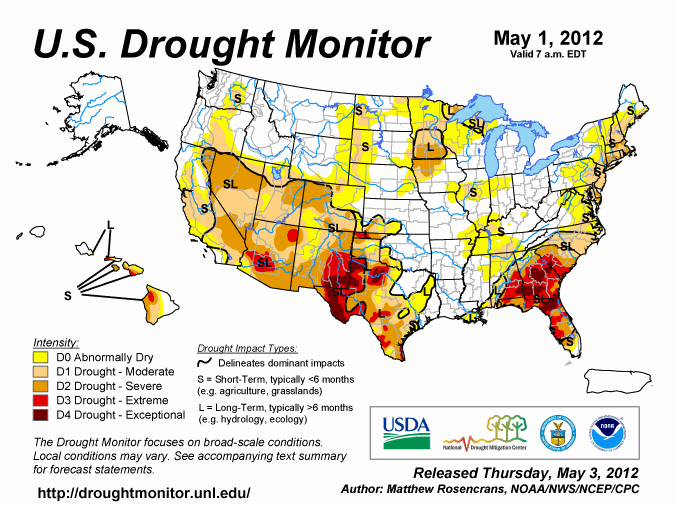It's clear that this summer—really, the whole year—has been hot and dry; it's clear that much of the Midwest is stricken with drought. What's less evident is just how fast it happened. Despite the high temperatures and low rainfall, much of the Midwest was not suffering through severe drought conditions until the middle of last month. Then it swept across the heartland:

In mid-May, a little bit of Illinois was "abnormally dry." By mid-June, virtually the entire state was in severe drought, with far downstate Illinois being in extreme drought.
Meteorologists call this a "flash drought":
The term flash drought has gained widespread use in recent years and is defined by Senay et al. (2008) as a severe, short-term event characterized by moisture deficits and abnormally high temperatures. We further add that a flash drought is the result of a synoptic meteorological pattern where potential ET [evapotranspiration] greatly exceeds precipitation for a period no less than 3 weeks such that available water in a previously moist (0–50 cm) soil profile decreases by more than 50%.
And it's the second one in a row:
The term "flash drought" first came up during the 2011 crop season. Last year, Midwest drought indicators went from zero to moderate drought in just six weeks—from early July to early August. During that stretch, intense heat combined with very dry conditions produced the same impact that usually develops over a three to six-month timeframe.
A look at drought conditions this crop season provides insight into just how dramatic and relatively quick-developing these flash drought conditions have been. As recently as March, less than 30 percent of the Midwest was judged to have drought conditions according to the weekly drought monitor. However, by mid-June, more than 70 percent of the region was judged to have some phase of drought in effect.
That was in late June; since then, conditions have gotten worse. It was supposed to be a good year for corn and soybeans—"one of the fastest starts in history," thanks to the abnormally warm early spring. Estimates predicted the highest levels of corn acreage since 1937. Now we're in the middle of the sixth-driest year on record, and farmers are struggling as corn crops wither in the flash drought: "On Monday, the U.S. Agriculture Department rated 56 percent of Illinois corn in 'poor' and 'very poor' condition, compared with 48 percent the week before. Only 11 percent of the state’s corn crop is in 'good' and 'excellent' condition — compared with 19 percent the week before." In an interesting parallel to housing, Pat Quinn announced that the state will offer debt restructuring and low-interest loans, through drought.illinois.gov.
Meanwhile, our neighbors in Iowa are preparing for the future, cultivating corn crops that can survive climate change: "Genetically engineered corn lines designed to sustain present yield levels in higher temperatures will likely be ready for introduction in five to 10 years."



